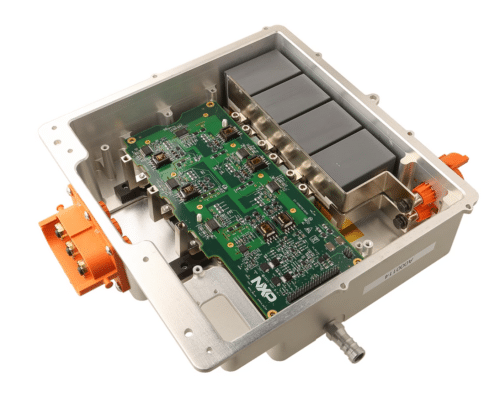The EV power inverter control design updates electric vehicle technology with improved processing, safety standards compliance, and advanced connectivity for performance.

Electric Vehicle (EV) Power Inverter Control is a cornerstone of modern electric vehicle technology, serving as the critical interface between the vehicle’s battery and its electric motors. This system manages the vital conversion of energy from direct current (DC) to alternating current (AC) and significantly enhances the vehicle’s overall efficiency and driving dynamics. By controlling motor speed and torque, facilitating regenerative braking, and ensuring optimal thermal management, EV power inverter control directly influences a vehicle’s vehicle’svehicle’s performance, range, and safety. As electric cars continue to evolve, the innovation and refinement of inverter control systems are essential in driving forward the efficiency and capabilities of these sustainable transportation solutions.
The third generation of the automotive-grade EV power inverter control reference design from NXP Semiconductors introduces a series of updates for 800 V Silicon Carbide (SiC)–based traction inverters. The design focuses on enhancing the overall architecture to meet the evolving needs of electric vehicle technology.
The S32K39 MCU helps improve processing performance, critical for executing control loops with reduced latency. Such an enhancement is vital for the efficient and responsive operation of the inverter system. The newer generation Safety System Basis Chip, the FS26, is specifically designed for applications that require adherence to ASIL D standards and offers the advantage of lower power consumption.
The new gate driver IC GD3162 is better suited for SiC MOSFETs, providing dynamic gate strength that improves efficiency. Additionally, it incorporates new features such as device health monitoring and DC discharge capabilities, enhancing the system’s functionality and safety.
Regarding connectivity, the design includes a TJA1103 PHY interface that complies with IEEE 802.3bw 100BASE-T1 Ethernet standards. This ensures more robust and reliable network connectivity, which is crucial for the complex communication needs of modern electric vehicles. Furthermore, the transition to the TJA146X transceiver with CAN Signal Improvement Capability (SIC) is another critical update. It reduces signal ringing and enables the network to operate at higher speeds, ranging from 5-8 Mbps.
The overarching aim of this reference design is to reduce the time-to-market for customers. The design simplifies and de-risks the customer design process by providing a system solution that includes optimized hardware and a comprehensive software offering. This approach is about speeding up development and ensuring reliability and consistency in the end product.
Safety is paramount in this design, as reflected in the extensive safety documentation provided. This includes an ASIL D safety application that takes advantage of the safety features inherent in the hardware and software components. By doing so, the design meets the stringent safety standards required in the automotive industry, ensuring that the end products are efficient, reliable and safe for use in electric vehicles.
NXP has tested this reference design. It comes with a Bill of Material (BOM), schematics, etc. You can find additional data about the reference design on the company’s website. To read more about this reference design, click here.






